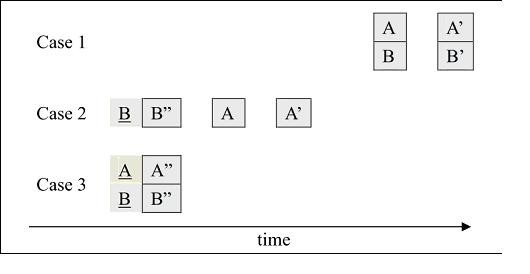The Patent Prosecution Highway (PPH) is a framework in which an application whose claims have been determined to be patentable in the Office of First Filing (OFF) is eligible to go through an accelerated examination in the Office of Second Filing (OSF) upon an applicant's request. Though every governmental IP office in the world tries to promote the advantages of the PPH in many aspects including higher grant rate, fast prosecution, cost saving and so on, does the PPH really bring the advantages to the applicant? According to our observation, the answer largely depends on the local practices of the country from which the PPH is requested.
Currently there are different PPH programs in the world, at least including PPH, PPH Mottainai, PCT-PPH, Global PPH and IP5PPH, which mainly differ in accepting different results from the OFF. In this article, we will focus on the PPH with the USPTO in Taiwan. The Taiwan IPO (TIPO) disclosed that totally 928 PPH applications had been filed until the end of February, 2015, and the grant rate of the PPH applications is around 95% (the grant rate for all applications including PPH and non-PPH is around 63%). Of course 95% is much high than 63%; however, it is the consequent result that almost all the PPH applications come from the 63% of the applications, i.e., the to-be-granted applications. It is worth noticing that the first OA grant rate for the PPH applications is only 40%. We will further investigate this figure later.
The TIPO further said the average first OA time is 50.2 days and the average decision time is 120 days for the PPH applications (the average first OA time is 21.16 months and the average decision time is 29.68 months for all applications at the end of 2014). These figures appear very impressive; however, the date of filing the PPH request might be the hidden factor causing the very big difference, because the date of filing the PPH request must be later than the decision date of the OFF. In other words, significant time may have elapsed after requesting the substantive examination.
To conduct a more impartial analysis on the cost, we focus on only one applicant’s applications to exclude the impact from the different technical fields and also the quality of specifications. Because the TIPO does not provide a convenient way to search for the PPH applications, we devoted some time to arrive at the following statistics. Although the grant rate is 100% for the PPH applications of the applicant, the first OA grant rate is only 36.4% (close to the average number 40% for all the PPH applications). We further list the rejection reasons and associated numbers in Table 1. You may notice that there are 86.7% of rejections coming from the formality issues rather than the novelty/inventiveness issues.
Table 1
| Patent Law | Enforcement Rules | Issue | Cases | % |
| 22.2 | inventiveness | 1 | 6.7% | |
| 26.1 | clear and sufficient | 1 | 6.7% | |
| 26.2 | clear and concise | 1 | 6.7% | |
| 26.4 | 17.4 | invention title | 3 | 20.0% |
| 26.4 | 18.2 | subject matter | 2 | 13.3% |
| 26.4 | 18.6 | single sentence | 1 | 6.7% |
| 26.4 | 22.1 | consistent | 4 | 26.7% |
| 26.4 | 22.3 | precise and complete | 1 | 6.7% |
| 43.2 | beyond the scope | 1 | 6.7% |
For simplicity, we model the prosecution process of an application with the following three cases with the demonstrating schematic diagram shown in Figure 1.

A: formality issues in OA
B: novelty/inventiveness issues in OA
A’: response/amendments to A
B’: response/amendments to B
A”: PPH with amendments to A
B”: PPH with amendments to B
A: formality issues provided by the local firm
B: novelty/inventiveness issues in the OA from the OFF
Let the cost occurred in Case 1 be I1+O1, where I1 includes the charges for the translations/comments of A+B, and O1 includes the charges for submitting the associated response/amendments A’+B’. Following the same logic, the cost for Case 2 would be O21 (submitting the PPH request with amendment B”) + I2 (the translations/comments of A) +O22 (submitting the associated response/amendments A’); and the cost for Case 3 would be O3 (submitting the PPH request with amendments A”+B”). It is easy to deduce that I1>I2, O1>O3 and O21+O22>O3, but the relation between O1 and O21+O22 is variable and depending on the complexities of B’ and B”. If I1+O1< O21+I2+O22 (it is very possible, because Case 1 is a two-stage process, and Case 2 is a three-stage process), it corresponds to the cost for Case 2 being higher than the cost for Case 1. In other words, the cost of the PPH application is higher than the same application without requesting the PPH. This is also the reason why some people argue that the PPH is not cost saving. However, the cost for Case 3 is always lower than either Case 1 or Case 2. The question is how to make Case 3 occur.
Although we challenge the magnitude of the advantages brought by the PPH, the PPH in Taiwan does offer an applicant the opportunity to obtain a longer patent life at lower cost. However, it must be implemented by the close cooperation between the applicant and the local firm to resolve the possible formality issues upon filing the PPH request. A qualified and experienced firm should be able to help the application transiting from Case 1 to Case 3 rather than to Case 2 only.

Elvan Yang is a patent attorney at Tai E International Patent & Law Office in Taiwan. He received a Ph.D. degree in Communications Engineering. Possessing rich experiences in the industry with diverse fields, currently he focuses on patent analysis and strategy management.
